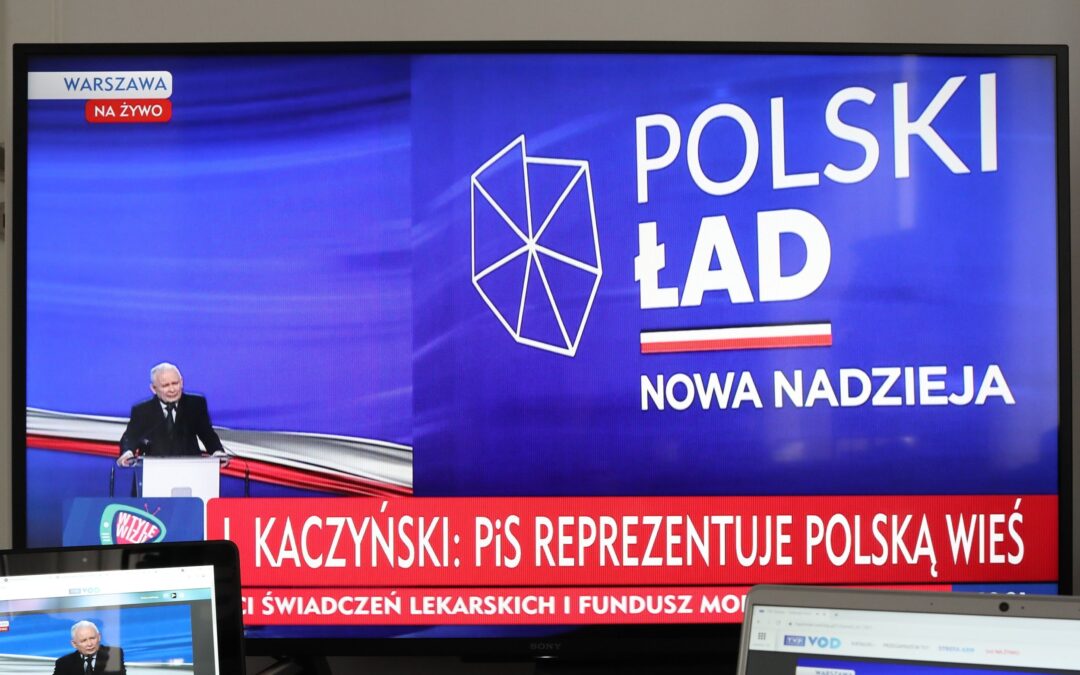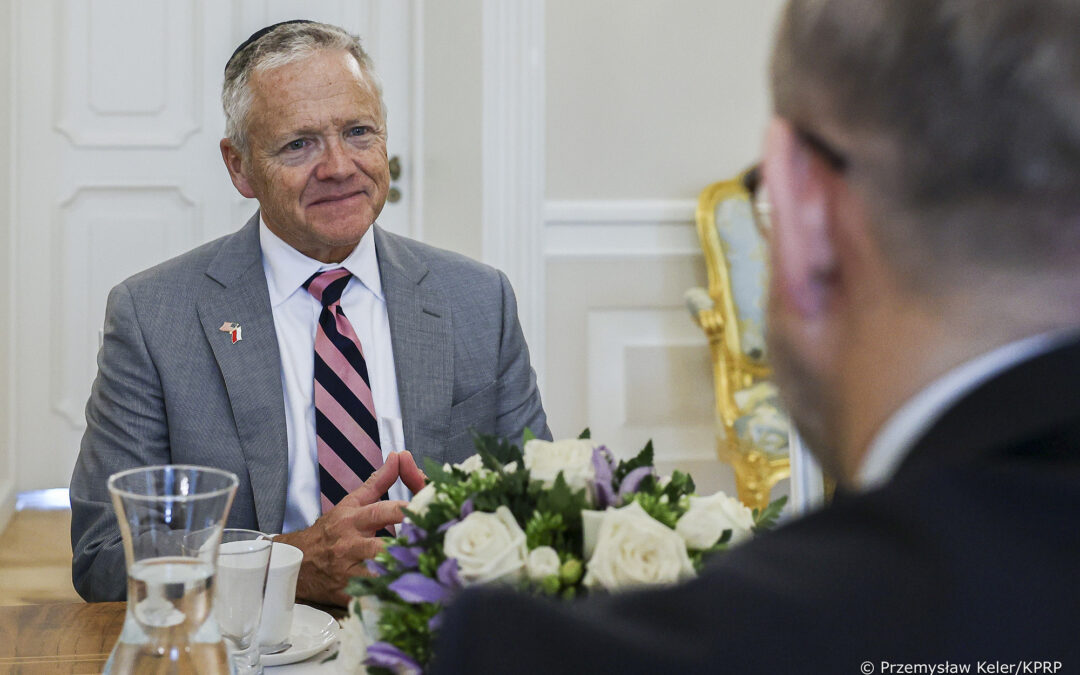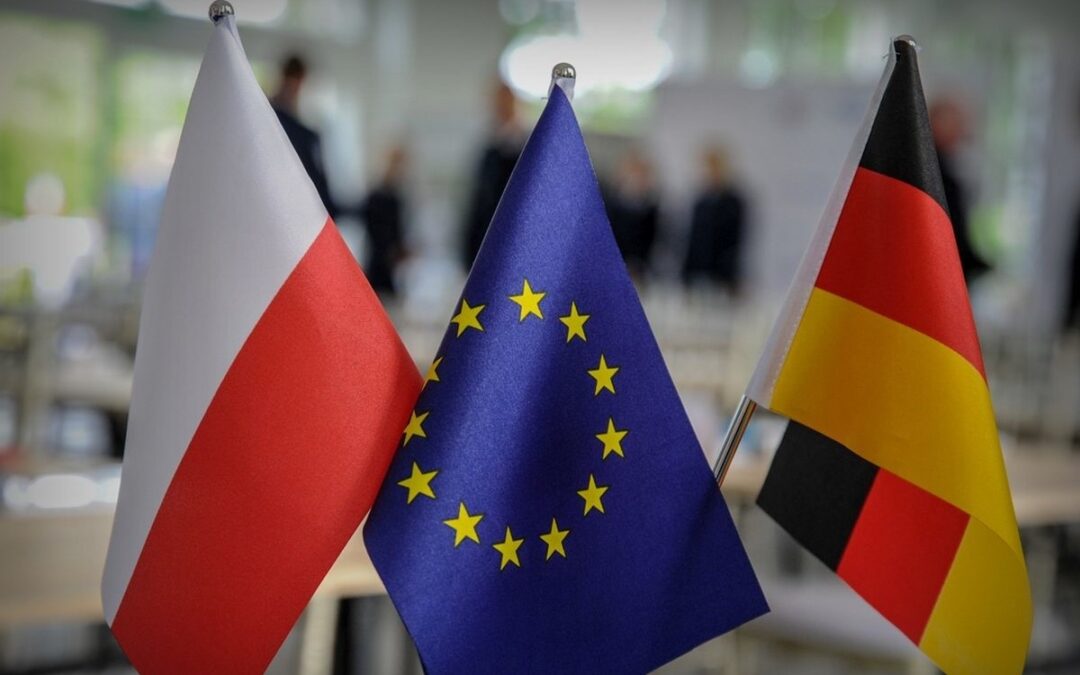By Stanley Bill
After a nine-month malaise, Poland’s United Right ruling coalition has roared back onto the offensive with what it does best: a new programme promising to put money into voters’ pockets.
In its “Polish Deal” (Polski Ład), presented on Saturday in a slick televised event, the coalition vowed to more than triple the tax-free threshold, cut tax on pensions, spend more on healthcare, and offer increased support to homebuyers and families.
With this box of goodies, the coalition hopes to rebound from a period in which its polling fell from as high as 47% down to just over 30% amid the pandemic, protests against a near-total abortion ban, and infighting between its three constituent parties.
The Polish Deal is a list of promises rather than a concrete plan. Specific legislation will not come until September, and the target of 7% of GDP for healthcare spending is set for the distant future of 2027.
Alongside its spending pledges, the programme also emphasises “traditional” Polish values, the importance of “neglected” sections of society, and an aspiration to “catch up” with the West. The Deal is above all a political gambit, intended to entice voters, reunite a fractured coalition, and throw a disoriented opposition into further turmoil.
With only partial support from the EU recovery fund, most of which must go to other priorities, the costs of the Deal will be met by an increased tax burden on high earners and rising public debt. Brussels’ suspension of budget rules for member states will allow for this fiscal extravagance in the exceptional circumstances of the pandemic.
By riding the wave of recovery, the ruling Law and Justice (PiS) party and its allies aim to spend their way to an unprecedented third term in government. And it just might work.
The party of the village
The Polish Deal looks very much like an election manifesto, strengthening recent speculation that PiS leader Jarosław Kaczyński may be planning to call an early vote.
The Deal targets PiS’s key voter demographics: lower-income earners, older voters, and small towns and villages. In his speech at the launch, Kaczyński proclaimed that PiS “represents the Polish village” (where 40% of voters live), promising investment and new benefits for farmers.
He cast these plans as part of a civilizational mission to bring all regions of the country up to the same standard of living as “Western Europe”. At the same time, he underlined questions of “identity” through commitments to expand history education and vague proposals of a new international agreement to defend the “rights of the family”.
Through these emphases, the Deal continues the ruling party’s successful left-right combination of redistribution and cultural conservatism. From the 500+ child benefit programme to its “Polish model of the welfare state”, PiS has intertwined generous state spending with traditional ideas of the family and national identity.
This integrated message hits the sweet spot of Poland’s electorate, with particular appeal in small towns and villages, where most Poles live.
Some voters, especially swing voters, are more drawn to the spending promises. The loyal conservative base responds to the call to defend traditional identity from foreign and domestic threats. But for many, including older voters, the two dimensions are mutually reinforcing parts of a coherent whole.
The success of this dual programme – in favourable macroeconomic conditions before the pandemic – has ensured that the opposition’s messages about threats to rule of law, media freedom, and democracy itself have failed to resonate. As a result, the United Right has won six consecutive election victories since 2015.
With the Polish Deal, the ruling coalition aims to refresh its winning vision of modernisation and social equalisation with a national conservative face.
A show of unity
The glossy spectacle of the televised launch demonstrated once again PiS’s capacity to package and spin a political vision far more effectively than the opposition. Yet the event was also a show of unity from a previously fractured coalition.
Kaczyński and technocratic prime minister Mateusz Morawiecki appeared as the main “architects” of the plan, but they were accompanied by Jarosław Gowin of the moderate centre-right Agreement (Porozumienie) and Zbigniew Ziobro of hard right United Poland (Solidarna Polska).
Since the 2019 parliamentary elections, when the two junior coalition partners increased their share of seats and influence, the United Right coalition has been anything but united. Last May, Gowin thwarted Kaczyński’s plan to hold presidential elections during the first wave of the pandemic. More recently, Gowin has been hit by a mutiny within his own party, with rumours that Kaczyński has encouraged the rebels.
In the meantime, Ziobro and his party colleagues have regularly criticised the government – and in particular Morawiecki – over their negotiations with Brussels regarding the EU budget, rule of law, and the recovery fund.
Personal enmities are part of this story – Morawiecki and Ziobro reputedly detest each other. But the conflict also stems from a much deeper divergence in the political interests of the partners, increasingly keen to accent their independent identities in preparation for a post-Kaczyński reality.
At the launch of the Polish Deal, the warring parties performed a kind of public reconciliation. The two rebellious leaders, Gowin and Ziobro, each made lengthy speeches, highlighting the specific contributions of their parties to the new joint endeavour. Gowin spoke of his supposed defence of the middle class and local government, while Ziobro emphasised security and justice.
The unifying effect of the latest manifesto is likely to be temporary, as was the case with a similar show of unity in October, when the three parties signed a new coalition agreement. But the prospect of another term in power might well hold them together.
Opposition in chaos
The Polish Deal has thrown an already divided opposition into further disarray. During the months of PiS’s decline, the opposition parties seemed to be moving slowly towards acceptance of the need for a common front. Now the divisions look sharper than ever.
Earlier this month, The Left (Lewica) broke ranks to negotiate with PiS to approve the EU’s post-pandemic recovery fund, saving Kaczyński from a parliamentary rebellion in his own coalition. The liberal centrist Civic Coalition (KO) responded by furiously accusing The Left of betrayal.
KO’s own decision not to vote for the EU funds, so as to hold PiS to account, appears to have been difficult for voters to understand. The opposition grouping now finds itself at a record low in the polls, overtaken by centrist challenger Poland 2050 (Polska 2050), led by former television host Szymon Hołownia. Instead of breaking the ruling coalition, as some predicted, the recovery fund issue has fractured the opposition.
Opposition party responses to the Polish Deal have reflected the widening divisions. The Left has expressed cautious approval of some aspects of the plan, while insisting it does not go far enough. Economically liberal KO has dismissed it as “neo-Marxist” redistribution at the expense of small business and future growth.
The Deal represents a formidable political challenge to all the opposition parties. The Left faces PiS’s continued appropriation of “left-wing” economic policies. All it can do is promise even more, without much credibility to deliver, while emphasising a cultural progressivism with only very limited appeal among the Polish electorate.
A declining KO finds itself in an even worse position. By attacking the Deal, it defends the interests of its core voters and stays true to its economically liberal roots. But it also cuts itself off from the majority of the Polish electorate, and from wider international trends in post-pandemic response.
Irrespective of the long-term costs, the political winds are very much in favour of public spending and redistribution. Stubborn resistance to this reality could be suicidal for KO. The alternative is to try to match PiS’s promises – a strategy that might annoy KO’s own base and expose it to ridicule from critics questioning its credibility.
Poland 2050, as a new player, could have more success in elaborating an independent position. It can endorse some of PiS’s ideas, while placing additional emphasis on the green energy transition, almost entirely absent from PiS’s plan.
Meanwhile, the agrarian Polish People’s Party (PSL) will view Kaczyński’s claim to “represent the village” as yet another provocation in the ongoing battle for the rural heartland – which PiS is winning.
So far, none of the opposition parties has presented a politically viable alternative to PiS’s vision for Poland. Only the ruling party’s own mistakes have threatened its success.
Scenarios for the future
The coming years could still see major changes to Poland’s political scene. On the opposition side, KO faces the threat of replacement by Poland 2050 as the main centrist force. Some observers also suspect Warsaw mayor Rafał Trzaskowski of planning a new party outside KO’s toxic brand.
Inside the ruling coalition, factional conflicts will no doubt intensify as Kaczyński’s retirement approaches. Morawiecki has the PiS leader’s support for now, but he is far from being an anointed successor.
The prime minister and his small group of modernising conservative allies face multiple rivals within the coalition: Ziobro and his hard right, Eurosceptic party; ultra-conservative factions in PiS; the folksy appeal of former prime minister Beata Szydło; party heavyweights, like defence minister Mariusz Błaszczak and MEP Joachim Brudziński, who will not want to be side-lined.
When Kaczyński finally steps down, it is possible to imagine the coalition and even PiS itself breaking apart into several competing groups. Some observers say Ziobro, a section of PiS, and far right Konfederacja could join forces. Gowin supposedly aspires to lead a new “Christian Democrat” centre including PSL and conservative parts of KO. Morawiecki, Szydło, Błaszczak, and others could make competing bids to lead and reshape a rump PiS.
After years of consolidation, a radical reconfiguration of Poland’s political party system seems possible in the medium term. Yet the advantages of existing party structures and state subventions still favour the status quo.
If elections were held tomorrow, current polling suggests a fractious alliance of KO, The Left, PSL, and Poland 2050 could win the narrowest of majorities, pushing PiS out of power.
The ruling party will be banking on the new Polish Deal to change this dynamic. Until only a few weeks ago, its divided coalition seemed to be in a slow but terminal decline. Now a record third term looks plausible.
Main image credit: Slawomir Kaminski / Agencja Gazeta

Stanley Bill is the founder and editor-at-large of Notes from Poland. He is also Professor of Polish Studies and Director of the Polish Studies Programme at the University of Cambridge. He has spent more than ten years living in Poland, mostly based in Kraków and Bielsko-Biała.
He is the Chair of the Board of the Notes from Poland Foundation.




















